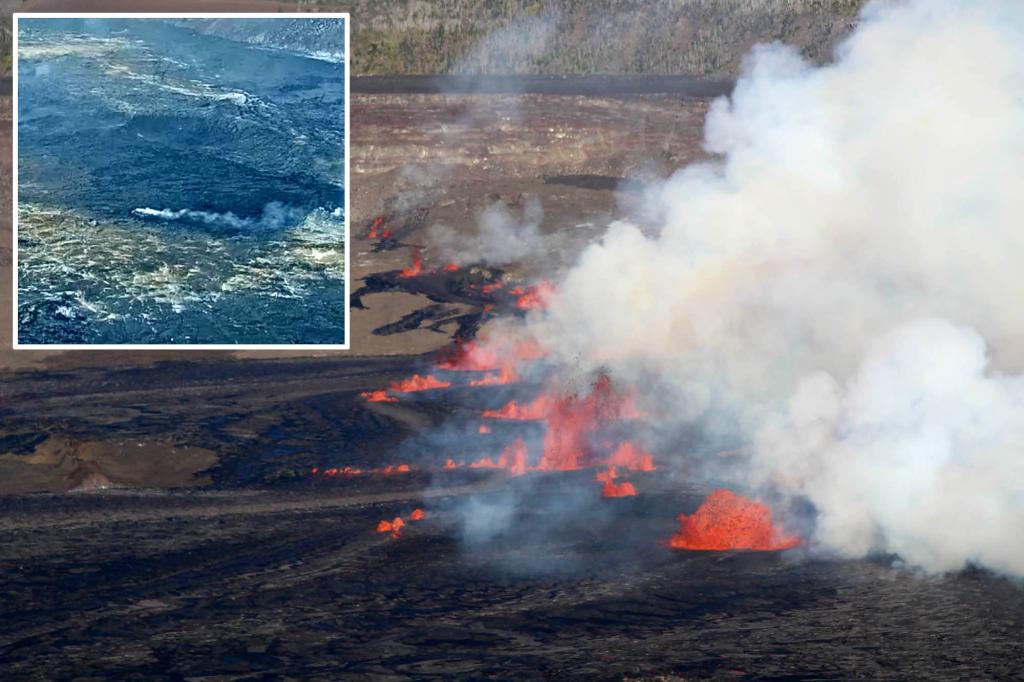Kīlauea volcano, located on the Big Island of Hawaii, has experienced a recent resurgence in volcanic activity, prompting heightened monitoring by the U.S. Geological Survey (USGS) and a shift to daily updates from the Hawaii Volcano Observatory. While an eruption is not currently underway, the volcano exhibits signs of elevated unrest, characterized by increased seismic activity and ground deformation. Although the overall earthquake activity remains relatively low, a cluster of small quakes occurred between Saturday and Tuesday, followed by about eight on Wednesday. The majority of these quakes registered below a magnitude of 2.0, totaling approximately 110 in recent days. The key concern stems from the ongoing ground swelling around the summit, which scientists attribute to an accumulation of magma beneath the surface. This magma accumulation, evident in the seismic data, is the driving force behind the observed ground deformation and increased earthquake activity. The USGS maintains a “yellow” advisory level, signifying a state of elevated unrest and the potential for future eruptions.
The recent surge in activity follows a relatively quiet period after the volcano’s last eruption, which occurred between September 15th and 20th near the Nāpau Crater within Hawai’i Volcanoes National Park. This eruption produced a lava flow covering over 880,000 square meters (217 acres) and created a fissure, or crack, near the crater measuring 1,600 feet long. Following this event, seismic activity and ground deformation significantly decreased. However, the underlying magmatic system remained active, albeit at a lower rate. The current increase in activity, although not yet resulting in an eruption, suggests a renewed pressurization of the magma chamber and highlights the dynamic nature of Kīlauea’s volcanic system. The volcano’s history is marked by periods of quiescence interspersed with eruptions, making continuous monitoring and assessment crucial for understanding its behavior and mitigating potential hazards.
The heightened monitoring by the USGS and the Hawaii Volcano Observatory reflects the potential for future eruptions at Kīlauea. While the current activity does not indicate an imminent eruption, the accumulating magma beneath the summit poses a significant risk. The volcano’s past behavior demonstrates its capacity for rapid shifts in activity, underscoring the importance of staying informed about the latest updates and heeding safety advisories. The USGS, through its monitoring efforts and communication with the public, plays a vital role in ensuring the safety and preparedness of residents and visitors in the vicinity of Kīlauea. Understanding the volcano’s dynamic nature and potential hazards is essential for mitigating risks and fostering resilience in the face of future volcanic events.
The current state of Kīlauea underscores the challenges of predicting volcanic eruptions. While scientists can monitor and interpret various indicators, such as seismic activity and ground deformation, the exact timing and magnitude of future eruptions remain uncertain. The complex interplay of factors influencing volcanic behavior necessitates a cautious approach, with continuous monitoring and analysis providing the best available information for assessing risks and informing decision-making. The transition to daily updates by the Hawaii Volcano Observatory reflects the increased need for timely and accurate information as the volcano enters a period of heightened unrest. This change in reporting frequency allows for closer tracking of Kīlauea’s activity, enabling scientists to detect subtle changes that might precede an eruption and provide advance warning to potentially affected communities.
The ongoing monitoring of Kīlauea also provides valuable insights into the broader field of volcanology. Each episode of activity, whether it culminates in an eruption or not, contributes to the understanding of volcanic processes and improves the ability to forecast future events. The data collected from Kīlauea, a highly active and well-studied volcano, informs scientific models and contributes to hazard assessments for volcanoes around the world. The lessons learned from Kīlauea’s dynamic behavior have implications for volcanic hazard mitigation globally, highlighting the importance of continuous monitoring, scientific research, and effective communication between scientists, emergency managers, and the public.
Beyond the scientific implications, the current activity at Kīlauea serves as a reminder of the powerful forces shaping the Earth’s surface. Volcanoes, while posing significant hazards, are also a testament to the planet’s dynamic nature and play a critical role in shaping landscapes and ecosystems. The ongoing monitoring and study of Kīlauea, along with public education efforts, contribute to a greater understanding and appreciation of these natural phenomena, fostering a culture of preparedness and respect for the power of volcanic activity. The USGS continues to closely monitor the situation and provide updates to the public, emphasizing the importance of staying informed and following safety advisories to minimize potential risks associated with Kīlauea’s heightened activity. The volcano remains a dynamic and evolving system, and its ongoing monitoring is vital for understanding its behavior and mitigating potential hazards in the future.

